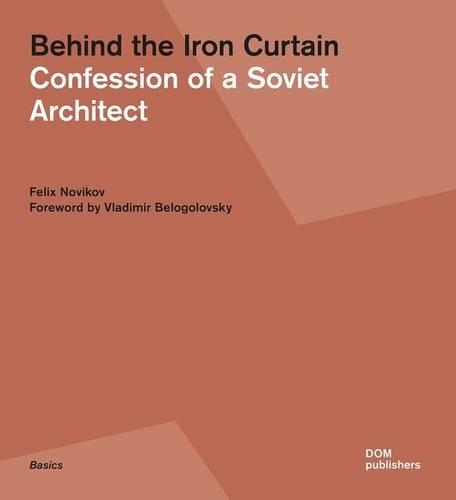
Behind the Iron Curtain: Confession of a Soviet Architect
(Paperback)
Publishing Details
Behind the Iron Curtain: Confession of a Soviet Architect
By (Author) Felix Novikov
DOM Publishers
DOM Publishers
1st September 2016
Germany
Classifications
General
Non Fiction
Physical Properties
Paperback
252
Width 210mm, Height 230mm
Description
Felix Novikov tells the dramatic story of Soviet architecture, portraying the conditions he worked in and how he collaborated with the government and other participants during the creative process. He explains how Soviet design and planning institutes were organized with reference to the Union of the Architects of the USSR and describes the creativ
Author Bio
Felix Novikov is a prominent Soviet/Russian architect, publicist, historian, and theorist of Soviet architecture. Born in 1927, he graduated from the Moscow Architectural Institute in 1950. His principal built works are the Embassy of the Soviet Union in Mauritania (1977), the University of Electronic Technology in Zelenograd (1971), the Main Science Center for Microelectronics (1969), the Palace of Pioneers in Moscow (1962), and Krasnopresnenskaya metro station in Moscow (1954). Among his numerous books are Soviet Modernism 1955-1985 (2010), Architects and Architecture (2002), and Formula of Architecture (1984). In 2009 and 2013 two monographs were published. Novikov is a Doctor of Architecture, Professor of the Moscow Architectural Institute, and full member of the International Academy of Architecture (MAAM). Novikov has been awarded the high title of People's Architect of the USSR, the State Prizes of Russia and USSR, and the National Architectural Award Crystal Daedalus. Today, the architect continues to be a prolific writer, critic, and initiator of many inspired ideas that materialize into publications, exhibitions, and conferences worldwide. He is the key surviving source for the fullest and most accurate understanding of the Soviet architecture after World War II and is credited with coining the term Soviet Modernism, referring to the third, concluding period (1955-1985) of Soviet architecture.
